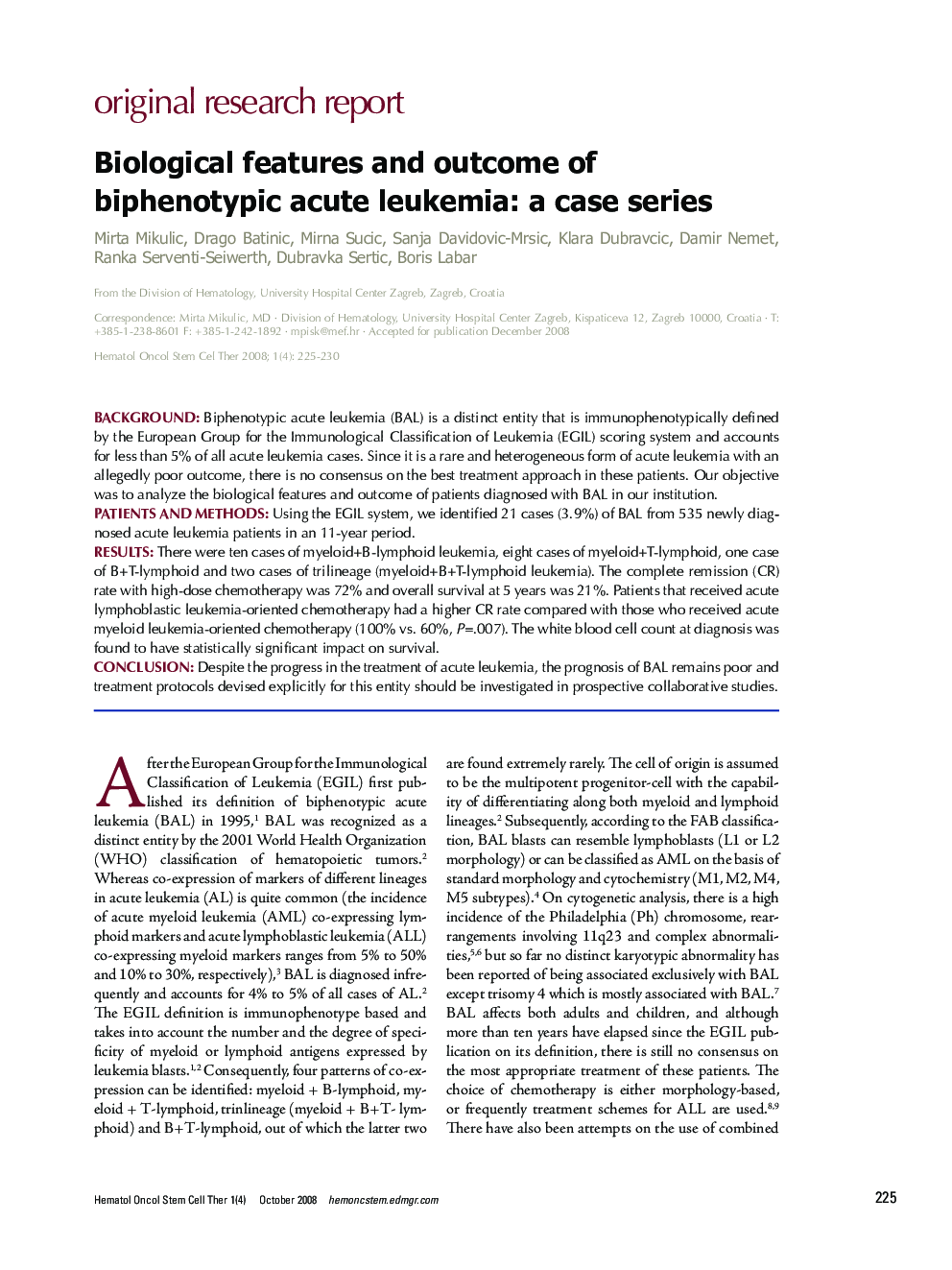| Article ID | Journal | Published Year | Pages | File Type |
|---|---|---|---|---|
| 2136006 | Hematology/Oncology and Stem Cell Therapy | 2008 | 6 Pages |
BACKGROUNDBiphenotypic acute leukemia (BAL) is a distinct entity that is immunophenotypically defined by the European Group for the Immunological Classification of Leukemia (EGIL) scoring system and accounts for less than 5% of all acute leukemia cases. Since it is a rare and heterogeneous form of acute leukemia with an allegedly poor outcome, there is no consensus on the best treatment approach in these patients. Our objective was to analyze the biological features and outcome of patients diagnosed with BAL in our institution.PATIENTS AND METHODSUsing the EGIL system, we identified 21 cases (3.9%) of BAL from 535 newly diagnosed acute leukemia patients in an 11-year period.RESULTSThere were ten cases of myeloid + B-lymphoid leukemia, eight cases of myeloid + T-lymphoid, one case of B + T-lymphoid and two cases of trilineage (myeloid + B + T-lymphoid leukemia). The complete remission (CR) rate with high-dose chemotherapy was 72% and overall survival at 5 years was 21%. Patients that received acute lymphoblastic leukemia-oriented chemotherapy had a higher CR rate compared with those who received acute myeloid leukemia-oriented chemotherapy (100% vs. 60%, P = .007). The white blood cell count at diagnosis was found to have statistically significant impact on survival.CONCLUSIONDespite the progress in the treatment of acute leukemia, the prognosis of BAL remains poor and treatment protocols devised explicitly for this entity should be investigated in prospective collaborative studies.
